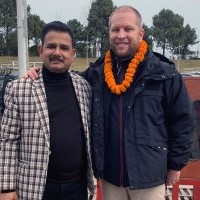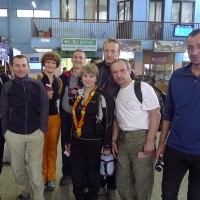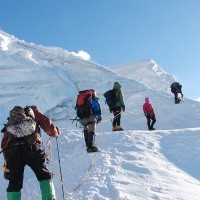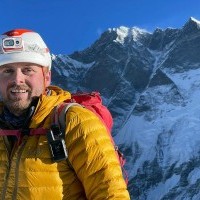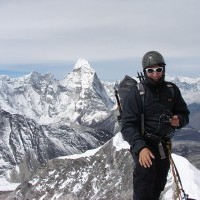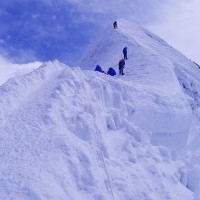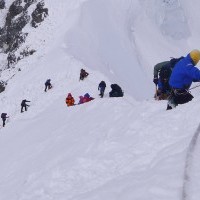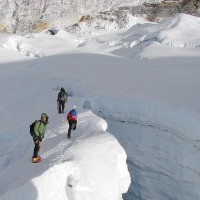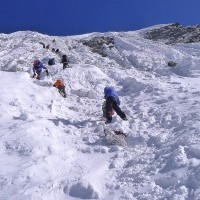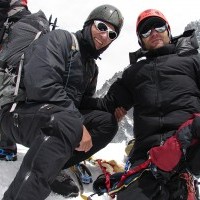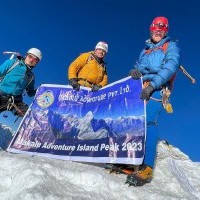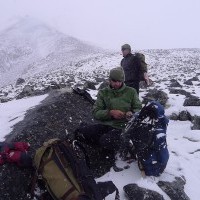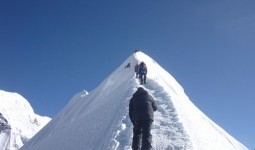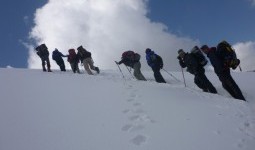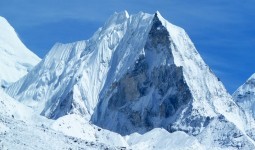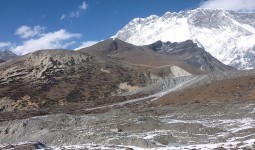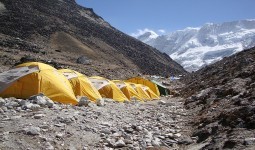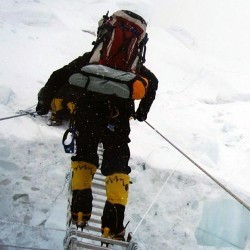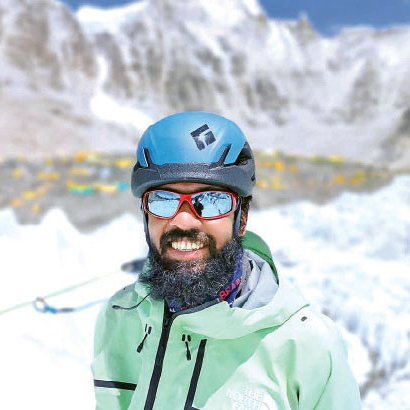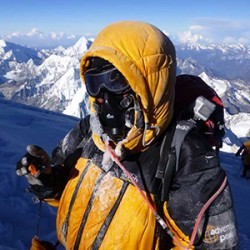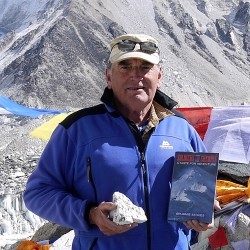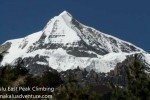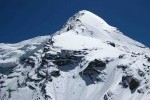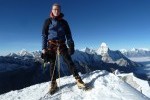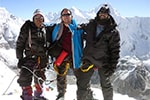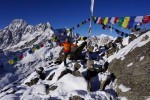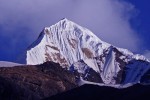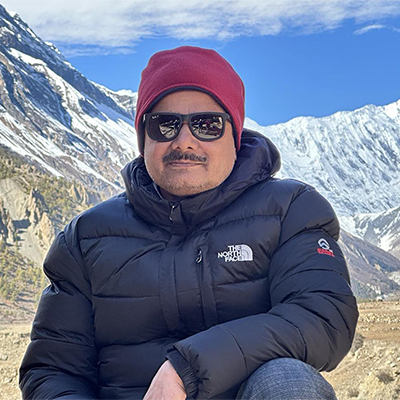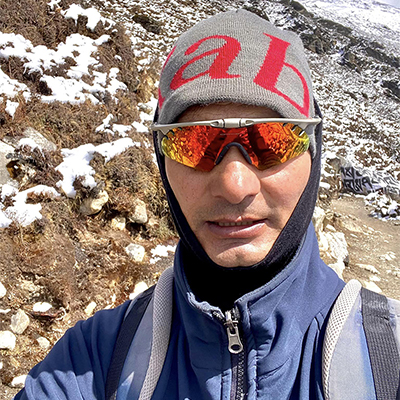Trip Overview
In the valleys of Khumbu & Imja, Everest and other massive peaks of the Eastern Himalaya dominate the skyline. Multi-colored prayer flags and intricately carved Mani stones line every trail and pass. With eight of the world's fourteen highest peaks, Nepal is not short of spectacular mountain views. On the trek to Island Peak base camp, you will meet friendly Sherpa people, pass through picturesque villages and experience diverse cultures and traditions. The flora and fauna are other gems of the Sagarmatha National Park.
Your Island Peak expedition starts with an early transfer by coach to Ramechhap for an ‘exciting’ flight to Lukla (2840m). From there the trail heads north along the Dudh Kosi to the Sherpa Capital, Namche Bazaar (344om). On the way you will cross many suspension bridges, some more interesting than others. Two nights will be spent in Namche to aid Altitude Acclimatisation. From Namche it will take two days to reach Dingboche, your next acclimatisation halt. On the way you will visit the Tengboche Monastery, the largest and most splendid Buddhist Monastery in the region.
From Dingboche the trail to Everest Base Camp traverses above Pheriche to Dughla before climbing to Lobuche (4910m), passing memorials to climbers lost on Everest and neighboring peaks on the way. One more short day and you arrive at Gorakshep (5140m) from where you will visit Everest Base Camp (5364m) and climb Kala Patthar (5550m), the Everest viewpoint. If Makalu Adventure has a team climbing Everest, you will be able to visit them at Base Camp and learn more about the great mountain and how it is climbed. Your Base Camp visit over, and eyes set firmly on your objective, you head back to Dingboche. Now in the Imja valley you head for Chhukhung (4730m) for one night before climbing to Island Peak Base Camp and the start of your Himalayan ascent...good luck.
Island Peak Climbing and Everest Base Camp (EBC) Trek
For those with three weeks to spare, the trek to Everest Base Camp followed by the ascent of Island Peak is the option of choice. Not only do you get to see Mount Everest from the best viewpoint in the Khumbu, Kala Patthar, the climb to 5,550m will greatly enhance acclimatisation and the chances of reaching the summit of Island Peak.
Although Island Peak is classed as a trekking peak the route to the summit is much more than a trek, there are crevasses to cross and steep slow and ice pitches to negotiate. The route is graded PD or Scottish Grade 11; a good level of fitness and sound mountaineering skills are required. Training in crevasse crossing and fixed line techniques will be carried out at Base Camp and revised again at High Camp.
Weather Information
Island Peak is in the Solu-Khumbu region of the Nepal Himalaya which is known for its changeable weather.
Conditions during an ascent of Island Peak will vary depending on the time of year. Pre-monsoon (March to May) temperatures are moderate, but the weather can still be unpredictable with strong winds and snowfall. Post-monsoon (September to November) temperatures are colder and there is a higher probability of snow.
In general, the temperature at Base Camp ranges from around freezing to 10°C during the day and drops to below freezing at night. On the mountain the temperature will be significantly lower with wind chill making it feel much colder. It's important to be prepared for changing weather conditions and to be properly clothed and equipped.
Mera Peak Vs. Island Peak, which is more difficult?
Mera Peak is an easier climb than Island Peak. Although Mera Peak is higher the route is straight forward with no technical difficulty - Alpine Grade F (easy). On Island Peak there are crevasses to be negotiated, some requiring ladder bridges, steeper sections are ascended using fixed ropes - Alpine Grade PD (some difficulties). While inexperienced climbers can ascend Mera Peak, Island peak requires basic alpine mountaineering skills.





